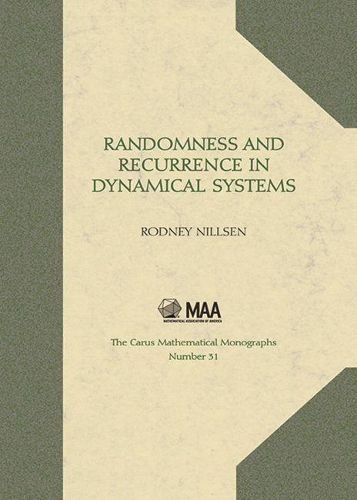Readings Newsletter
Become a Readings Member to make your shopping experience even easier.
Sign in or sign up for free!
You’re not far away from qualifying for FREE standard shipping within Australia
You’ve qualified for FREE standard shipping within Australia
The cart is loading…






Randomness and Recurrence in Dynamical Systems makes accessible, at the undergraduate or beginning graduate level, results and ideas on averaging, randomness and recurrence that traditionally require measure theory. Assuming only a background in elementary calculus and real analysis, new techniques of proof have been developed, and known proofs have been adapted, to make this possible. The book connects the material with recent research, thereby bridging the gap between undergraduate teaching and current mathematical research. The various topics are unified by the concept of an abstract dynamical system, so there are close connections with what may be termed ‘Probabilistic Chaos Theory’ or ‘Randomness’. The work is appropriate for undergraduate courses in real analysis, dynamical systems, random and chaotic phenomena and probability. It will also be suitable for readers who are interested in mathematical ideas of randomness and recurrence, but who have no measure theory background.
$9.00 standard shipping within Australia
FREE standard shipping within Australia for orders over $100.00
Express & International shipping calculated at checkout
Randomness and Recurrence in Dynamical Systems makes accessible, at the undergraduate or beginning graduate level, results and ideas on averaging, randomness and recurrence that traditionally require measure theory. Assuming only a background in elementary calculus and real analysis, new techniques of proof have been developed, and known proofs have been adapted, to make this possible. The book connects the material with recent research, thereby bridging the gap between undergraduate teaching and current mathematical research. The various topics are unified by the concept of an abstract dynamical system, so there are close connections with what may be termed ‘Probabilistic Chaos Theory’ or ‘Randomness’. The work is appropriate for undergraduate courses in real analysis, dynamical systems, random and chaotic phenomena and probability. It will also be suitable for readers who are interested in mathematical ideas of randomness and recurrence, but who have no measure theory background.